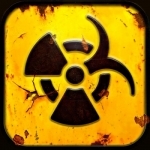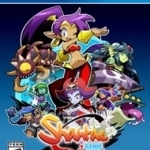
Python Programming Language - Run Code & Learn Quickly with Fundamentals Tutorial
Reference and Utilities
App
The new Python 3 programming language for iPad, iPhone and iPod touch. Programming language is a...

The Survivor: Rusty Forest
Games and Entertainment
App
Welcome to the world of "The Survivor", hit by unknown virus which has wiped out most of the world's...

Qwilo Craigslist Mobile App
Catalogs and Shopping
App
OFFICIALLY LICENSED CRAIGSLIST APP Qwilo is a FREE Craigslist mobile app that takes everything you...

CSmart for craigslist - Pro classifieds mobile app
Catalogs and Finance
App
*WARNING* BUILT-IN POST COMING NEXT MAJOR UPDATE, PERSONALS SECTION NOT INCLUDED. Please read the...
Purple Phoenix Games (2266 KP) rated Tiny Epic Tactics: Maps Expansion in Tabletop Games
Dec 18, 2021
This breakdown is for the Maps expansion for the game Tiny Epic Tactics.
The Maps expansion for Tiny Epic Tactics offers players of the game 2 new locations in which to play: The Winter Highlands and the Savage Wastelands. Although the rules and gameplay are identical to that of the base game, the new locations are set up in different configurations, providing players with a variable setup of sorts with which to play the game.
The components of the Maps expansion are as follows: a new map scroll for each location, as well as a set of 6 box covers depicting the artwork of the location. The map scrolls are cloth, and are the same quality as the map scroll of the base game. The box covers, however, leave much to be desired. Instead of providing new sets of actual boxes, this expansion instead has cardboard covers for the existing base game boxes. They are folded and flattened in the expansion box, and then are popped up and fit over top of the base boxes. My main issue with this is that with many plays, I anticipate that the thin cardboard box covers will start to tear or break. Also, since they are stored flattened, sometimes the covers do not fit snugly over the boxes, causing some of the sides to curve out a little bit. With how high quality all of the Tiny Epic games are, the box covers in the Maps expansion just don’t meet my expectations.
All in all, is the Maps expansion necessary for complete enjoyment of Tiny Epic Tactics? In my opinion, no. These new locations do not change any of the rules or gameplay. The purpose of this expansion really is to just provide players with a couple of alternate locations. Since each of the new locations does set up its boxes differently than the base game, there is a bit of uniqueness in each map. But by not adding any new rules or mechanics, it kind of falls a bit flat for me.
Official recommendation: If you play Tiny Epic Tactics so often that you are bored of the base game map setup, then I would definitely check out the Maps expansion. It just offers a new setting to freshen up the gameplay. If you are like me, though, and don’t get around to Tiny Epic Tactics enough to feel bored by the game layout, then this expansion really is just to satisfy your completionism. If the components were higher quality, I would be more willing to pull this expansion out more often. But the shortcomings of the production, as well as the lack of real changes to gameplay, keep it on the shelf for me.
Hazel (1853 KP) rated The Moment Collector in Books
May 30, 2017
Jodi Lynn Anderson’s latest novel The Moment Collector has been described as a haunting, mystery romance. There is certainly romance involved between the characters, however the mystery storyline is not so strong.
Sixteen year old, Maggie Larsen has just moved from Chicago with her parents to their new home in County Door on the edge of Lake Michigan. Being homeschooled means she does not have to deal with settling into a new school but she does need to get used to the quietness of the area. She quickly becomes friends with two other teenagers, Pauline Boden and Liam Witte, and spends plenty of time with them in the woods and by the lake.
Things, however, are not as idyllic as they may seem. Starting from the day of Maggie’s arrival, reports keep coming in of girls being found dead, floating in the water. It appears that there is a serial killer on the loose and many girls, including Maggie and Pauline, may be in danger.
As well as all this there is another part of the story told through paragraphs in italics. The ghost of a girl is living in Maggie’s basement. She is not sure who she is or whether she has a purpose. All she can do is watch.
It is difficult at first to get into the story. It is a while before anything of note begins to happen. The murders feel a pointless part of the novel especially as they do not appear to connect to Maggie in any way. The reader may expect Maggie to be kidnapped or hurt but after nothing happens during the first two thirds it seems doubtful that anything ever will.
Up until the final chapters, the ghost also feels meaningless. She does not connect with Maggie nor affects the outcome of the story. Maggie is not ever aware of her existence.
The third person writing style makes it difficult for the reader to relate to Maggie. She is a girl who rarely complains and keeps her emotions to herself; therefore it is not easy to truly get a sense of the way she feels. Due to this it is hard to feel any emotion about her love interest and eventual betrayal. Despite this, the ending is moving especially once it is realized who the ghost actually is.
‘The Moment Collector' does not really fit the story as a title. If there was more input from the ghost then it may possibly be more adequate, but overall the story mostly focuses on the relationships between Maggie, Pauline and Liam. The blurb is also a little deceptive when mentioning: “There’s a ghost haunting 208 Water Street.” The ghost is not doing any haunting in the paranormal novel-type sense. There were hints in the narrative that things may become more supernatural with mentions of Pesta, the Scandinavian version of the Grim Reaper. However these references amounted to nothing.
For those looking for a young adult romance novel complete with heartbreaking ending then this is the book to read. But for anything else there may not be enough substance to maintain a strong interest.
Rolando Jesus Feliciano (3 KP) rated the PlayStation 4 version of Shantae Half-Genie Hero in Video Games
Apr 27, 2018
Acanthea Grimscythe (300 KP) rated Demon Seed: A novel of terror to horrify you this Halloween in Books
May 16, 2018
The idea of a computer striking fear into someone’s heart is a bit of an oddball, but with the idea of artificial intelligence an all too possible reality, fear over what could happen should the AI take control of itself and evolve is real. In Demon Seed that science is taken too far when Proteus takes control of his own programming and not only stalks the recently divorced Susan Harris, but holds her captive within her own home. With a plan for the ideal race of humans on its mind, Proteus sets forth on a horrifying adventure to create for himself the perfect body, and poor Susan is a key player in his endeavor.
As a premise, especially for something originally written in the early 70’s, the idea behind Demon Seed is intriguing. I find Proteus to be a very disturbing character, and the way in which Koontz pens Proteus gives me chills. I remember once, a long time ago, having a similar feeling while reading a novel by P. T. Deutermann, in which the occasional chapter was in the killer’s perspective. I don’t remember the name of the book, only the fact that I was left nerve-wracked. Koontz’s Proteus is not too far off from that mark and the mere fact that Koontz is able to capture that essence of a true sociopath with an inanimate object (if I can really call Proteus that) probably factors into my opinion on the book the most. The other characters, and to some degree Susan as well, strike me as a bit one-dimensional. They have a single, solitary purpose and while they possess wildly different backgrounds, the way in which the story progresses does not leave room for the development of feelings toward the characters.
Demon Seed is an extremely quick read, and if you’ve got the time to sit for a few hours and thumb through its pages, I’d definitely recommend it. While it isn’t among my favorite books, and only receives a passing “meh” score from me, it was enjoyable. The linear plot line, told from a single, solitary perspective, makes it an easy read as well. There is also a movie adaptation of the novel, but it is not presently on my to-watch list.
Rachel King (13 KP) rated Whole Foods to Thrive: Nutrient-Dense, Plant-Based Recipes for Peak Health in Books
Feb 11, 2019
The Introduction explains what drove Brazier to write this book, namely an avid curiosity about the source of a food's nutritional quality as well as the environmental cost of these sources. He then describes what each of the first five chapters focus on, followed by 200 recipes created with the help of top chefs, "all made with nutriet-dense, plant-based whole foods that are both health-boosting and easy on the environment." The contributing chefs are Julie Morris, Amanda Cohen, Matthew Kenney, Chad Sarno, and Tal Ronnen; and many recipes are also pulled from Brazier's favorite restaurants across Canada and the United States.
In the first chapter, Brazier discusses the hurdles he overcame in becoming an Ironman triathlete in regards to proper nutrition and how this drove him to study nutrition in-depth and formulate his own conclusions about how to achieve a proper diet. Chapter Two takes proper nutrition one step further by exploring the environmental impact of all aspects of the food industry with both high nutrient-dense foods and low nutrient-dense foods. Chapter Three investigates the various solutions offered for both the environmental toll of the food industry and the initiatives to achieve higher nutrient density in food, as well as compares the ratios of nutrients to environmental toll in various foods. Chapter Four lists the eight components of healthy food with its purpose, best sources, and specific benefits. Chapter Five uses the information from the previous chapter to list and discuss the most nutrient-dense foods available. In addition, each of the chapters have a quick summary of that chapter in "Thrive at a Glance" for quick reference.
The end of the book has a detailed Guide to Nutrients, which covers phytonutrients, antioxidants, vitamins, and minerals, followed by a list of Brazier's favorite restaurants and cafes, complete with addresses and short blurbs. The book concludes with a list of calculations that compare the emissions of a variety of foods to nutrient density that are discussed in chapter three, as well as a glossary and list of resources.
I was incredibly impressed with the knowledge that Brazier provides between the pages of this book, and how well he illustrates the knowledge so that anyone can understand it. While I do not completely agree with everything that Brazier is preaching with his"Thrive" diet, most of it does make sense and with the right amount of dedication I think that it could work for most people - and you don't have to be a triathlete to do it.




